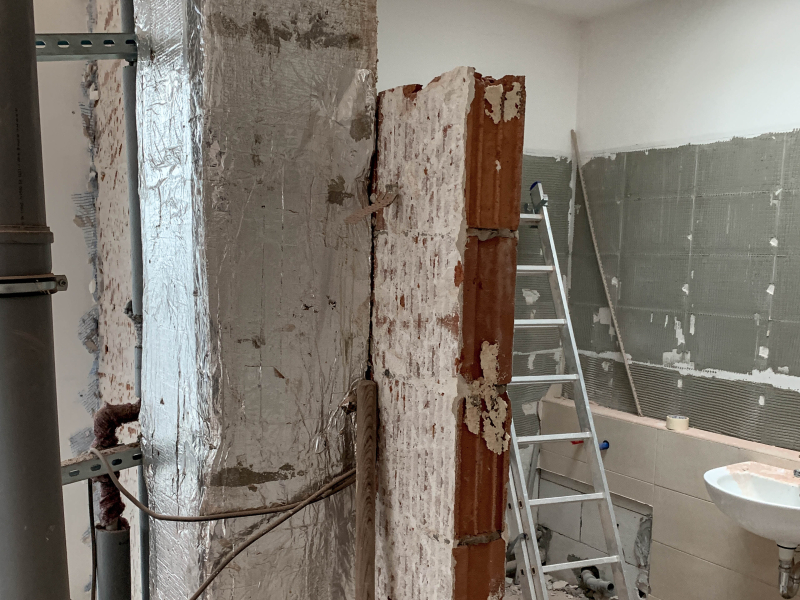Apartment Renovation
This is the most frequent topic we encounter. Refurbishment is a discipline that is both interesting and tricky. You never know what awaits you. Therefore, it’s good to always consider the worst-case scenario.
Refurbishment can be „cosmetic“, for when you decide to adjust only some parts of the apartment, or extensive when you’ve bought an apartment in an old building that does not meet modern requirements.

Before purchasing, we highly recommend consulting an expert. Whether it’s construction supervision, a designer, or an architect, it’s important to assess the apartment’s condition, what the refurbishment will entail, and what it will cost you. Then it’s up to you to weigh if the total expenses for purchase and refurbishment are worthwhile, and how feasible it is to sell the apartment for that price later on. Even if the apartment looks fine at first glance, you may discover uneven floors and expensive leveling work when you start demolishing. It’s ideal to conduct probes, but this is unrealistic when you are buying. No one will allow you to tear up their apartment only for you to reconsider the purchase.
With refurbishment, intricate planning doesn’t make sense. Most issues are solved on-site, as they come up during the process. Even the best-drawn project can’t solve these problems on paper. Therefore, it’s good to consult an architect experienced in refurbishments, who can anticipate the challenges.

You may be surprised by the cost of refurbishment, but it’s important not to underestimate this aspect. That’s why it’s customary to account for a 20% reserve in the overall budget for the construction part. Once you embark on the renovations, there’s no turning back. Floors can’t be reverted to being uneven. We call this the ‚salami technique.‘ You gradually slice away from the budget until you realize you’ve committed to a full-scale intervention, even if you hadn’t planned on it initially. It’s crucial to focus on the construction aspect, as you won’t get a chance to redo it in the future. After all, you wouldn’t want rotten beams under your beautiful new floor. Therefore, it’s always important to consider from the outset whether the purchase makes sense. We often encounter the opinion that redoing the electrical wiring should be enough. The client gets a price for the electrical work alone but fails to realize that it entails a host of additional costs, like entirely new plasterwork — those grooves in the walls will definitely not look appealing to you.

Another question is whether drastic interventions are really necessary when it looks like only a minor adjustment is needed, such as wanting a kitchen in the living room. Unfortunately, the original layouts in older buildings are entirely unsatisfactory from today's perspective. Bathrooms were designed as minimal spaces. Even though the term 'bath' appears in all the original plans, relaxation was never a consideration back then. Kitchens were never part of the living and representative rooms; they were tucked away somewhere in the courtyard area, far away so as not to disturb anyone. Moving the kitchen to the representative part of the apartment is one of the most complex tasks. Connecting to the waste system becomes a literal game of inches for us.
It's different in newer buildings, where you're dealing with a 'lived-in' interior that needs refreshing. Typically, the interventions are simpler, making the entire project more affordable.
In apartment refurbishments, we love to combine original elements with modern ones. It's ideal to recreate original architectural features and mix them with modern, simple, minimalist furniture and lighting. This creates an interesting contrast. You probably won't get a complete renovation in the Art Nouveau spirit from us. We are architects, not restorers. I like to refer to the original architecture, for example with brass fixtures or hexagonal tiles, but there always has to be that contrast.

One important warning: never carry out a renovation in an apartment where you are also living. Any construction intervention significantly disrupts household operations. Even just from a timing perspective, it's hard to coordinate the arrival of craftsmen with the departure of household members. Additionally, daily cleaning after construction is highly demanding, both in terms of time and financially. We always recommend to our clients that they find alternative accommodation for at least the duration of the construction work.
by Radka - 10. 8. 2023